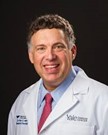Dear Readers,
We would like to invite you to read our summary of the ATS 2022 congress, which was held last May in San Francisco. It was great that we could visit the location physically again. I would like to mention two or three areas of specific interest highlighted in the report.
First, of course, is COVID-19. The SPRINTER study investigated inhaled interferon β in patients who were hospitalized with supplemental oxygen. The primary endpoint of time to hospital discharge was not reached, but in a subgroup of patients over 65 years, with comorbidities and some other characteristics, there was a significant reduction in worsening of the disease, compared to placebo. So, this study certainly stimulates additional research on interferon β, for very specific allocated groups.
Also long COVID is getting more and more attention. In a study on almost 1,400 patients, most of them working, 75% had one or more criteria of frailty five months after the acute disease episode. Five months is certainly not one year, but it indicates there's a lot of disability after an acute COVID infection.
Regarding asthma, we know that there is a shift in the paradigm indicating that in early and relatively mild asthma, we go further and earlier to ICS-LABA combination. At the ATS, there was a subsequent study looking at uncontrolled moderate to severe asthma, questioning if we should also give rescue medication with ICS-LABA instead of only SABA in these patients. The study found significant improvements in exacerbations, hospitalizations, etc., in favor of ICS-LABA as rescue in comparison to only SABA as rescue. While this must be confirmed in more studies, I'm sure that this will also enter the guidelines quite rapidly.
Worth mentioning are two studies on respiratory cough, where P2X3 antagonists have shown attenuated symptoms, which is hopeful for patients, and finally, the guidelines on the medical treatment of interstitial lung disease have been updated again. These were presented at the ATS, and simultaneously published.
I hope that you will find some important new data for your clinical practice and we really hope that you will enjoy reading this ATS summary report.
Thank you very much.
Prof. Richard Dekhuijzen
Biography:
Prof. P.N. Richard Dekhuijzen is Professor of Pulmonology at the Radboud University Medical Center in Nijmegen, the Netherlands. His specific area of clinical and research interest includes asthma, COPD, and inhalation technology. He studied medicine at VU Amsterdam and completed his training in pulmonology at the Onze Lieve Vrouwe Gasthuis in Amsterdam and in the Academic Hospital Nijmegen. In 1989, he finished his PhD thesis on training of the respiratory muscles in COPD, followed by a PhD thesis on steroid induced myopathy of the diaphragm in 1994 at the Catholic University Leuven (Belgium). He is author/co-author of over 330 peer-reviewed papers and many textbook chapters on respiratory medicine. From 2008-2010, he was Head of the Cardiology Department at Radboudumc. Until 2016, he chaired the Department of Pulmonary Diseases, the Heart-Lung Centre Nijmegen, and the Medical Staff at Radboudumc. He is the scientific chair of the Aerosol Drug Management Improvement Team (ADMIT) and chair of the Dutch Inhalation Technology Working Group. Currently, he is chair of the Medical Ethical Committee of the Radboudumc.
Conflict of Interest Statement:
In the last 3 years, Richard Dekhuijzen and/or his department received research grants, unrestricted educational grants, and/or fees for lectures and advisory board meetings from AstraZeneca, Boehringer-Ingelheim, Chiesi, GSK, Mundipharma, Novartis, Sandoz, Teva, and Zambon.
Copyright ©2022 Medicom Medical Publishers
Posted on
Previous Article
« SPRINTER: SNG001 still in the running? Next Article
SPIN 2022 Highlights Podcast »
« SPRINTER: SNG001 still in the running? Next Article
SPIN 2022 Highlights Podcast »
Table of Contents: ATS 2022
Featured articles
Letter from the Editor
COVID-19
Nebulised aviptadil “futile” in I-SPY COVID-19 trial
Lung transplantation after COVID-19-associated ARDS
Mesenchymal stem cells offer no benefit in COVID-19
Alpha-1 antitrypsin for ARDS secondary to severe COVID-19
Frailty prevalent 5 months following hospitalisation for COVID-19
Paediatric long COVID lacks definitions
Asthma Clinical Trial Updates
MANDALA and DENALI pattern success for albuterol-budesonide in asthma
ACOUSTICS data sounds good for adolescent asthma exacerbations
Type 2 asthma in children managed by dupilumab, despite atopic comorbidities
NAVIGATOR steers asthma patients to tezepelumab
High-intensity interval training slashes daily corticosteroids in asthma
Chronic Obstructive Pulmonary Disease
Three’s a crowd for triple therapy in COPD
Higher 1-year COPD mortality after hospitalisation for White patients
Reducing dyspnoea in chronic lung disease through weight loss
CT-evident mucus plugs in COPD associated with death
Home-based rehabilitation improves COPD: a randomised study
Highlighted Advances
Novel P2X3 antagonist can SOOTHE chronic cough
Colistimethate sodium PROMISing for non-cystic fibrosis bronchiectasis
Is avacopan better than prednisone for respiratory ANCA-associated vasculitis outcomes?
PAGANINI phase 2b data promising for eliapixant
POISE-3: Tranexamic acid for non-cardiac surgery
Obstructive sleep apnoea in most children with pulmonary hypertension
No screening evidence for COPD
Novel PDE4B inhibitor offers breakthrough for IPF
Hydrocortisone does not help preterm infants
CPAP temporarily supports pulmonary oxygenation in morbidly obese patients
ISAACC trial: CPAP controls blood pressure in ACS patients with severe OSA
Related Articles
September 10, 2021
Ensartinib bests crizotinib in ALK-positive non-small cell lung cancer

April 18, 2021
Phase III ADAURA Trial: CNS Recurrences slashed for NSCLC
October 29, 2023
Gabapentinoids increase risk of exacerbations in COPD
© 2024 Medicom Medical Publishers. All rights reserved. Terms and Conditions | Privacy Policy


